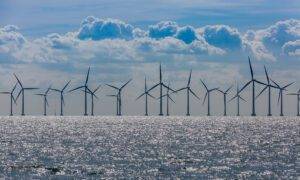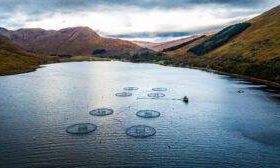
The UK’s green energy ambitions have suffered a serious setback after Danish energy giant Ørsted cancelled plans for Hornsea 4, one of the country’s largest proposed offshore windfarms, citing soaring supply chain costs and financial risks.
Hornsea 4, expected to power 1 million homes with its 2.4GW capacity, was the fourth phase of the Hornsea windfarm project off the Yorkshire coast — one of the biggest offshore wind initiatives in the world. Ørsted said the project “no longer makes economic sense”, despite having won a government contract in 2023.
“The combination of increased supply chain costs, higher interest rates and increased execution risk means this project is unlikely to deliver value for us,” said Rasmus Errboe, Ørsted’s CEO.
Hornsea 4 becomes the latest in a string of major offshore wind setbacks. Last year, Ørsted scrapped two wind projects off the US coast, while Swedish firm Vattenfall pulled out of the Norfolk Boreas project, citing similar financial headwinds.
The cancellation underscores the mounting challenges faced by the offshore wind sector, including inflation, interest rate rises, and global supply chain disruption, all of which are pushing up the cost of development.
The UK government’s target to quadruple offshore wind capacity by 2030 — part of its plan to reduce gas-fired power to just 5% of electricity generation — now looks more difficult to achieve.
“This raises the stakes for the next Contracts for Difference auction,” said Dhara Vyas, chief executive of Energy UK. “It’s vital the government ensures it’s a success.”
Jane Cooper, deputy chief executive of RenewableUK, warned that government plans to introduce zonal pricing — which would vary electricity prices based on location — would “drive the cost of investment up even further”.
The government acknowledged Ørsted’s decision as a setback but insisted it still had a “strong pipeline of clean power projects” and pledged to work with Ørsted to potentially get Hornsea 4 back on track.
“We will deliver an energy system that brings energy bills down for good and strengthens Britain’s energy security,” a government spokesperson said.
The Hornsea 4 cancellation came on the same day that Harbour Energy, the UK’s largest North Sea oil and gas producer, announced plans to cut up to 250 jobs from its Aberdeen-based workforce. The company blamed the UK’s windfall tax on oil and gas profits, saying it had made operations financially unviable.
In the US, the offshore wind sector faces additional uncertainty after the incoming Trump administration vowed to end offshore wind development “on day one”. Norwegian energy company Equinor has already been issued a stop-work order on a major project.
Ørsted, once Europe’s most valuable renewable energy company, has seen its market value plunge by 80% since 2021. In 2024, it launched a major restructuring and cancelled dividends through to 2025 to shore up finances.
Despite near-term headwinds, the company remains optimistic about the long-term potential of offshore wind, pointing to growing global electricity demand and renewed interest in energy security.
“The long-term outlook for offshore wind remains strong,” Ørsted said.
However, for the UK, the collapse of Hornsea 4 is a stark reminder of the fragility of green investment, especially in the face of rising costs, regulatory uncertainty, and international competition for capital. With critical auctions looming this summer, the pressure is now firmly on the government to adjust its policies — or risk missing its flagship climate targets.
Read more:
Ørsted shelves major UK offshore windfarm project in blow to green energy goals






